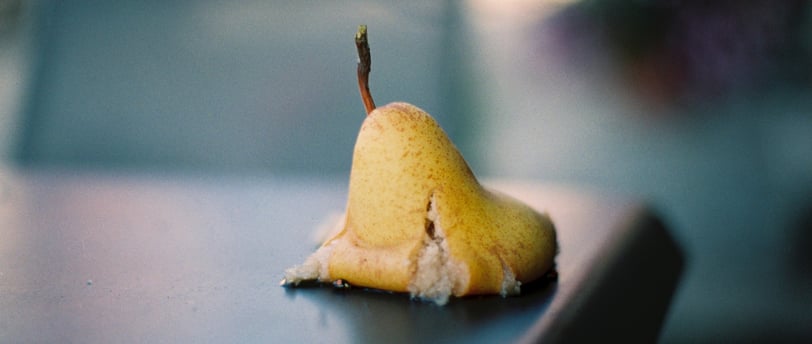Making the Most of Questionable Quality & Freshness
Creative Ways to Use and Determine Usability of Foods
ALTERNATE USESFOOD
By: Stephanie
12/22/20233 min read


Introduction
When it comes to our groceries, we all strive to maintain a fresh and high-quality supply. However, there are times when we find ourselves faced with foods that are past their best freshness or have questionable quality. While it's important to prioritize food safety, there are ways to determine which foods are still usable and which ones should be discarded. In this article, we will explore methods to assess the usability of questionable foods and discuss innovative ways to repurpose them, reducing waste and maximizing our resources.
Determining Usability of Questionable Foods
It is crucial to understand the difference between foods that are still usable past their best freshness and those that have spoiled beyond consumption. Here are some guidelines to help you make informed decisions:
1. Sensory Evaluation
One of the simplest and most effective ways to determine the quality of food is through sensory evaluation. By using our senses of sight, smell, and taste, we can gauge the condition of the food item:
- Sight: Look for any visible signs of spoilage, such as mold, discoloration, or texture changes. Trust your instincts, and if something looks off, it's best to err on the side of caution and discard it.
- Smell: Give the food a sniff. If it emits an unpleasant or foul odor, it is likely spoiled and should be discarded.
- Taste: If the food passes the sight and smell tests, you can take a small taste to determine if it still maintains its flavor and texture. However, exercise caution, especially with perishable items like meat and dairy products.
2. Understanding Best By and Expiration Dates
While best by and expiration dates provide guidance on the freshness and quality of food, they are not always definitive indicators of spoilage. Understanding these dates can help you make informed decisions:
- Best By Date: This date indicates the period during which the food is expected to be at its best quality. It does not necessarily mean the food is unsafe to consume after this date. Use your judgment and sensory evaluation to determine if it is still usable.
- Expiration Date: This date is a safety guideline provided by the manufacturer. Consuming the food after the expiration date may pose health risks. It is generally recommended to discard food items after their expiration date.
However, it's important to note that these dates are not foolproof indicators of spoilage. Factors such as storage conditions, packaging integrity, and the type of food can influence its freshness. Trust your senses and evaluate each food item individually.
Repurposing Questionable Foods
Instead of immediately discarding foods that are past their prime, consider exploring new ways to utilize them. By getting creative in the kitchen, we can reduce waste and stretch our resources further. Here are some ideas:
1. Transforming Overripe Fruits
Overripe fruits can be repurposed in various ways:
- Smoothies and Shakes: Blend overripe fruits with yogurt or milk to create delicious and nutritious smoothies.
- Baking: Mash or puree overripe fruits and use them in baking recipes such as bread, muffins, or cakes.
- Preserves and Jams: Cook down overripe fruits with sugar to make preserves or jams that can be enjoyed later.
2. Utilizing Stale Bread
Stale bread doesn't have to go to waste. Consider these options:
- Breadcrumbs: Toast stale bread and process it into breadcrumbs, which can be used for coating or as a topping in various dishes.
- Croutons: Cube stale bread, toss it with olive oil and seasonings, then bake until crispy for homemade croutons.
- Bread Pudding: Soak stale bread in a mixture of milk, eggs, and sugar, then bake it into a delicious bread pudding.
3. Making Use of Leftover Vegetables
When you have leftover vegetables that are on the verge of spoiling, try these ideas:
- Vegetable Stock: Simmer leftover vegetables with herbs and spices to create a flavorful vegetable stock for soups and stews.
- Stir-Fries and Curries: Incorporate leftover vegetables into stir-fries or curries for a quick and nutritious meal.
- Veggie Chips: Slice vegetables thinly, toss them with olive oil and seasonings, then bake until crispy for homemade vegetable chips.
4. Repurposing Meat and Fish Scraps
Even small meat or fish scraps can be utilized in creative ways:
- Broths and Stocks: Simmer meat or fish scraps with aromatic vegetables and herbs to create flavorful broths or stocks.
- Casseroles and Quiches: Incorporate small meat or fish scraps into casseroles or quiches for added flavor.
- Pet Treats: If safe for consumption, use small meat scraps to make homemade pet treats for your furry friends.
Conclusion
Questionable quality and freshness should not always be synonymous with waste. By employing sensory evaluation techniques and understanding best by and expiration dates, we can determine which foods are still usable and which ones should be discarded. Additionally, repurposing questionable foods through creative cooking methods allows us to reduce waste and make the most of our resources. Let's embrace these strategies and strive for a more sustainable approach in our kitchens.